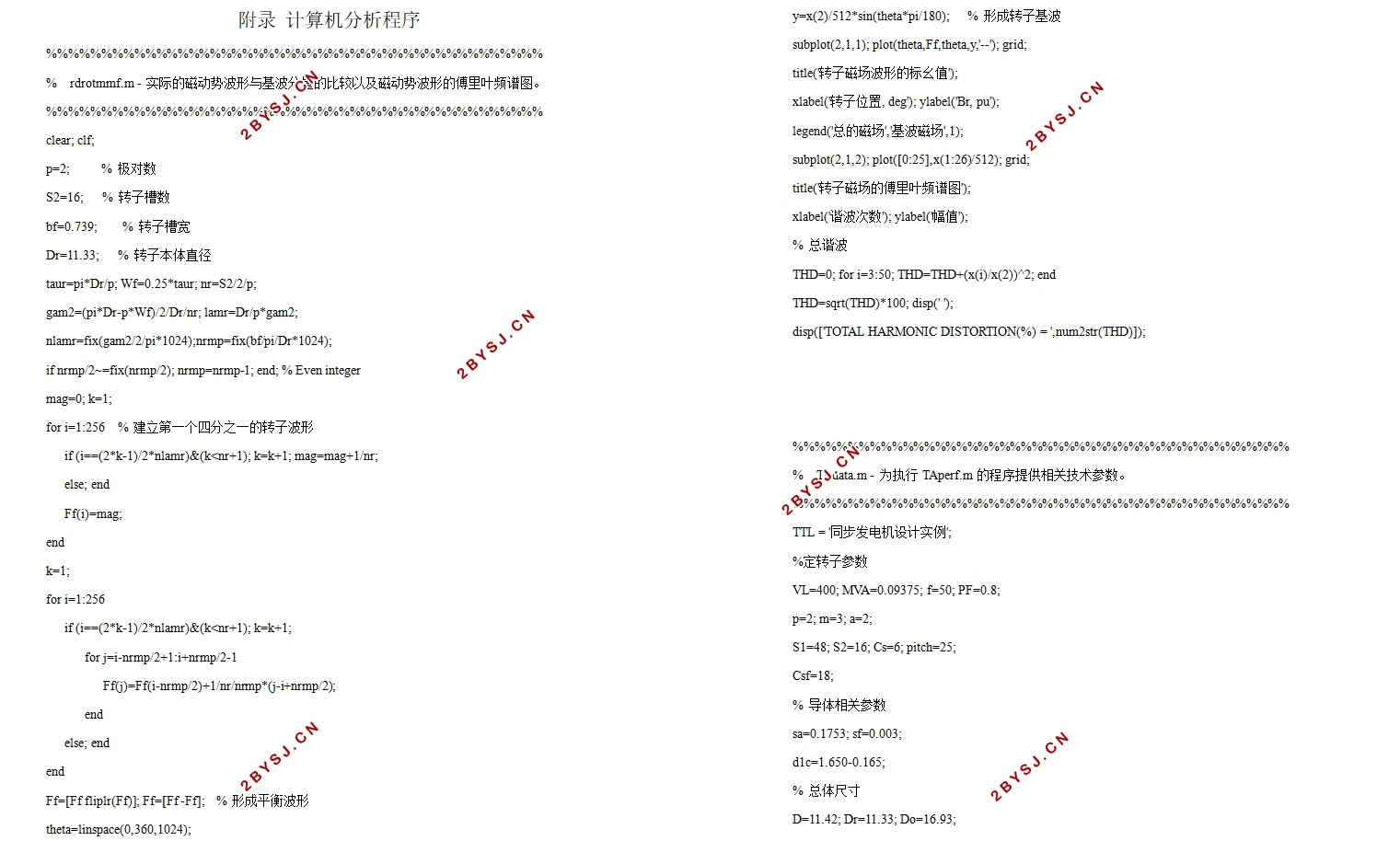基于MATLAB的同步电机设计与性能分析
无需注册登录,支付后按照提示操作即可获取该资料.
基于MATLAB的同步电机设计与性能分析(任务书,开题报告,外文翻译,论文16000字,仿真程序)
摘 要
本文首先对国内外同步电机工业的发展以及其研究意义做了较为细致的描述,并介绍了同步电机设计的基本任务及其过程,然后简单概述了MATLAB软件以及将其运用于同步电机的设计与性能分析中;接着对同步电机设计中确定冷却方式做了相关分析,通过介绍汽轮发电机的冷却方式与不同冷却方式的比较,可以选取符合要求的冷却方式;然后对同步电机设计中涉及的主要尺寸、定子槽和绕组的设计、转子本体和绕组的设计以及相关磁路尺寸设计做出了计算;最后运用MATLAB仿真验证设计的合理性,并对其气隙谐波特性、空载特性、效率、外特性等相关性能进行了仿真与分析。
关键词:同步电机 参数设计 MATLAB仿真 性能分析
The design of Synchronous motor and performance analysis based on the MATLAB
Abstract
First, the paper introduces the development, significance, research emphases and status of synchronous motor industry in and out of our country in detail. Then the step and process of designing synchronous motor and the performance analysis which is based on the software called MATLAB is introduced. And, we begin the main body with the brief presentation and differences of each motor cooling method. Through analysis above we can choose the suitable cooling method to meet the requirement. Then followed is the design of main dimensions of electric machinery structure, including general dimensions, the design of stator slot and winding coil, the design of rotor itself and winding coil and the size of magnetic circuit. Finally, we use the MATLAB to test the electromotor if it meets the requirements and analyze its performance, including the resulting normalized B-field mmf wave, open circuit saturation curves, terminal characteristics with constant field excitation, efficiency and so on.
Key Words: synchronous motor; design of main dimensions; MATLAB; analysis of performance



目 录
摘 要 Ⅰ
ABSTRACT Ⅱ
第一章 绪论 1
1.1 同步电机在国内外的发展与研究意义 1
1.2 同步电机设计的任务与过程 3
1.3 MATLAB的应用 5
第二章 汽轮发电机主要冷却方式及比较 7
2.1 冷却方式概述 7
2.2 冷却方式的比较 8
2.1.1 空气冷却的汽轮发电机 8
2.1.2 氢气冷却的汽轮发电机 8
2.1.3 水冷却的汽轮发电机 8
2.1.4 水、氢组合冷却的汽轮发电机 9
第三章 三相汽轮同步发电机额定参数及定转子设计 10
3.1 同步电机的额定参数与主要尺寸 10
3.1.1同步电机的额定参数 10
3.1.2同步电机的主要尺寸 11
3.2 定子槽和绕组的设计 12
3.3 转子本体和绕组的设计 17
3.4 磁路尺寸计算 20
第四章 基于MATLAB的性能分析 28
4.1 同步电机气隙磁动势的谐波特性 28
4.2 同步电机主要性能 29
4.3 同步电机的相量图 30
4.4 同步电机的外特性 31
4.5 同步并网时的相量图 32
4.6 同步电机的激磁需求 33
4.7 不同氢压下同步发电机的无功功率供给 34
结语 36
参考文献 37
附录 计算机分析程序 38
致 谢 50
